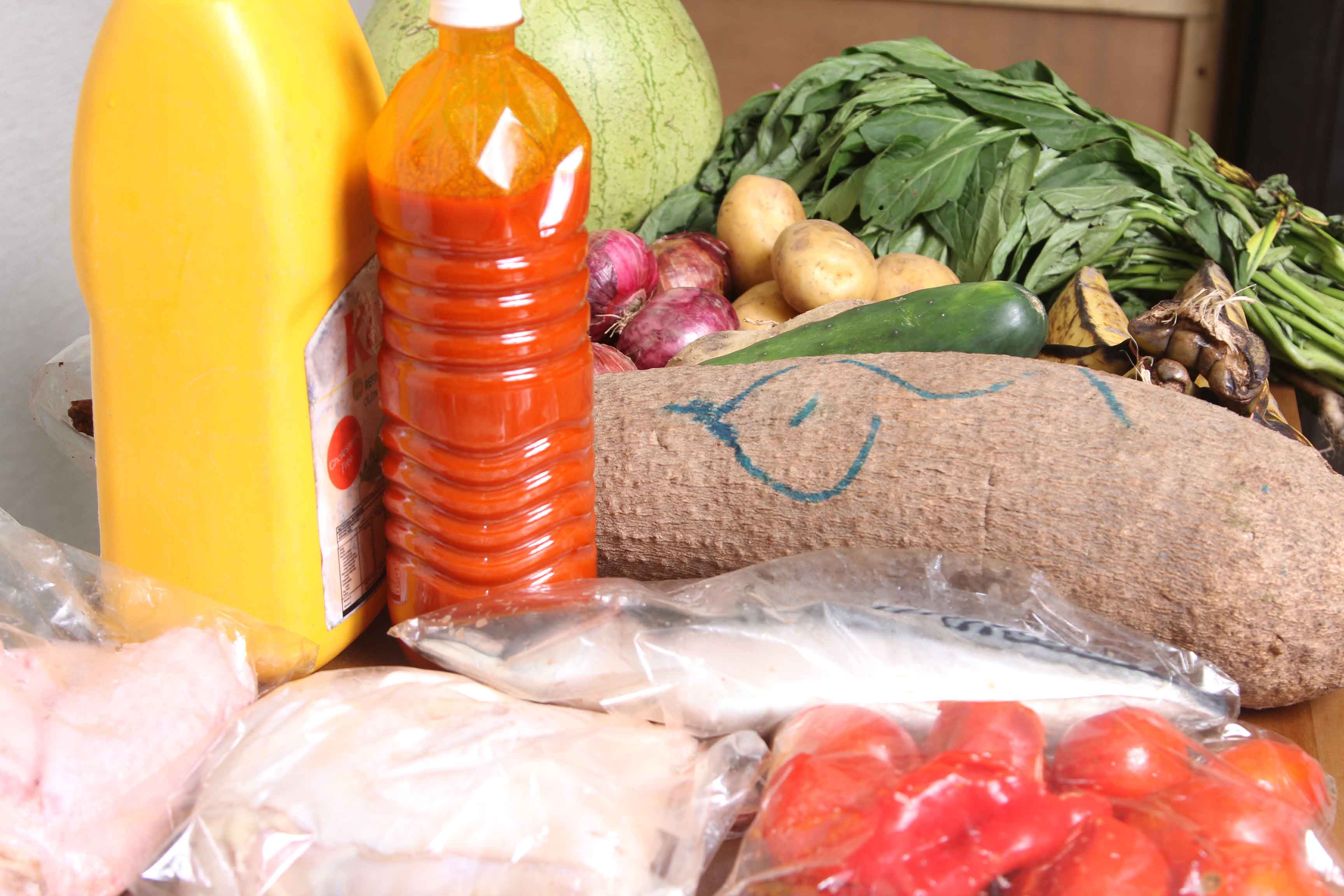FOOD STORAGE AT HOME
Table of Contents
- Introduction to food storage
- Things you need to store food at home
- General tips for Food storage.
- How to Store
- Yams
- Irish and Sweet potatoes
- Fresh fruits and vegetables
- Beans
- Ogbono
- Egusi
- Smoked fish
- Rice
- Plantain
- Fresh Vegetables (Ugwu, green, afang…..)
- Flour
- Elubo (yam flour)/ plantain flour
- Gari
- Crayfish
- Fresh meat
- Baby food
- Onions
- Nigerian snacks (chin chin, kuli kuli….)
- Ginger
- Garlic
- Fresh peppers
- Frozen foods
- Pap
- Stockfish
- Iru (locust beans)
- Carrots
- Moi moi leaves.
- Pure Honey
- Palmoil
- Shawa fish
- Coconut oil
- Peppersoup spice
- Canned foods
INTRODUCTION TO FOOD STORAGE
Buying in bulk helps you save lots of money and time on food shopping, Allowing you more time to spend on really important things.
However, not knowing the appropriate way to store foods bought in bulk defeats the entire purpose of bulk buying.
The first step to proper food storage is buying good quality foods. Foods that are in top condition, free from insects, molds and stuff like that. The better the quality of the food, the longer you are able to store for.
We have put together a guide that simplifies storing various Nigerian foods at home, it does not take much to apply. We hope this guide serves purpose. For any foods you will like to see in this guide, send us an email – themarketfoodshop@gmail.com, we will do our best research and try to add it in.
THINGS YOU NEED AT HOME TO STORE FOOD
- Thermometer
- Ziploc / Freezer Bags
- Covered bowls
- Fridge
- Freezer
- Polythene bags
- Old newspapers/ brown paper
- Cane / plastic Baskets
- Wooden slabs.
GENERAL TIPS FOR FOOD STORAGE
In Fridge
- Make sure fridge is always cold enough (between 0 – 5 degrees ).
- Keep the fridge door closed as much as possible.
- Wait for hot foods to cool before you put in the fridge/freezer.
- Turn the temperature down to help keep it cold enough if the fridge is full.
- You should not leave food out of the fridge for more than 4 hours.
Meat
- Keep fresh meat and poultry sealed in clean containers in the bottom section of the fridge, to avoid it touching or dripping on to other foods (this is to avoid cross contamination).
- When meat is cooked, transfer into the fridge / freezer once it cools.
- Raw meat and cooked meat should be stored apart.
In Freezer
- Wait for hot foods to cool down before you put them in the fridge / freezer.
- Be sure to label freezer meals / left overs with date stored.
- To make sure the taste and texture of food is retained for long enough in the freezer, be sure that the freezer is kept frozen all the time.
- Transfer left over foods into freezer within 2 hours of cooking.
- Don’t leave foods stored in the freezer open as this can lead to freezer burn, drying out or loss of flavor.
- If the food to be stored in the freezer is cooked, make sure its properly cooked through before storage.
Storing dry foods in containers / bags safely.
- Make sure the containers/ bags are air tight to keep foods from going stale.
- Don’t keep foods close to chemicals.
- Foods should not be stored directly on the floor, place them on wooden slabs to keep them from insects and mice.
- Avoid using containers that have been used for other purposes for food.
- Storage area should not be damp, ensure storage area is kept dry, well ventilated and cool.
Storing canned foods
- If you are unable to use up the canned food you open at once, transfer what’s left into a plastic container, cover and keep in the fridge.
- Some cans are designed with resealable lids, those can be used to store the foods even after the can has been opened otherwise never leave food in an already opened can as the food can react with the can once exposed to air.
Cling film
- It’s okay to use cling film to wrap high fat foods like cheese, butter, raw meats (with fat), fried meats, pies, pastries……
- When you are using cling film in the microwave, keep it from touching the food.
- In cases where the cling film can melt into the food, avoid using it.
Kitchen foil
- Aluminum foil affects the taste of acidic foods and so should not be used to store them. Foods like tomatoes, cabbage….
HOW TO STORE YAMS AT HOME
How to store peeled yams in the freezer.
To be able to do this successfully, you must live in an area where there’s steady power supply otherwise you might end up with inedible yams.
- Cut and peel the slices of yams.
- Wash the slices of yams and pack them into Ziploc (freezer) bags (you can also use polythene bags, just make sure you double the polythene bags and push out the air in the bags before sealing or tying.
- Be sure to pack them into quantities you can use per time and transfer into the freezer.
- Once you are ready to use, just take out the quantity you want to cook and transfer straight into boiling water to cook. Don’t wait for the yam to defrost before cooking as this will affect the texture you get in the end.
Full (unpeeled) yam Tubers
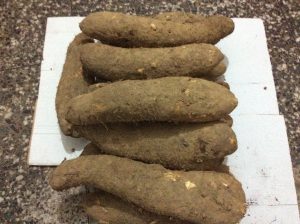
Onitsha yam
- Store in an airy, well ventilated space.
- Keep away from light.
- Periodically check tubers and remove damaged /rotten/spoilt ones.
- Consume bruised tubers before other ones.
- Store off the ground preferably on a wooden slab or in woven straw baskets
Depending on the time of the year, this method can be used to store unpeeled tubers of yams for between 6- 8 weeks. However, between June and august where most tubers in the market are dry yams, its best to either peel and store the yams in the freezer or consume the unpeeled tubers of yam within 1-2 weeks of purchase as they spoil really quickly.
HOW TO STORE IRISH AND SWEET POTATOES.
Sweet potatoes are more perishable than irish potatoes, to keep sweet potatoes for longer, keep them in a dark, cool and well ventilated space. As for irish potatoes, you can simply store them in a cool, dry and well ventilated place. Do not store potatoes (and most foods especially fruits) with onions as they cause them to rot more quickly.
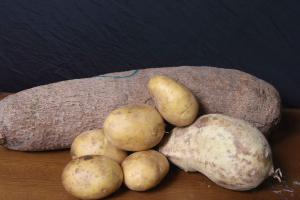
Yams and potatoes
Here are additional tips for storing potatoes.
- Periodically check tubers and remove damaged /rotten/spoilt ones.
- Consume bruised tubers before other ones.
- Store off the ground preferably on a wooden slab or in woven straw baskets.
HOW TO STORE FRESH FRUITS AND VEGETABLES

Basket of fruits
- Don’t wash fruit and veggies (except chopped veggies like cucumber) before storing.
- Avoid storing fruits (especially banana and apple) and vegetables together, banana gives off a gas that causes other fruits to ripen and rot quicker.
- When storing veggies in a plastic bag, make sure the bag is well aerated; pack them loosely in the bag to enable proper circulation.
- If you want avocado to ripen quicker, put it in a bag with ripening banana.
HOW TO STORE BEANS
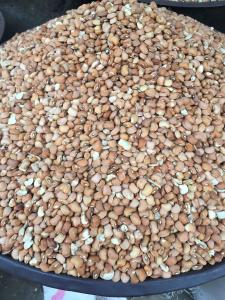
Olotu beans
- Buy beans that are free of weevils.
- Pick out shaft and dirt if possible, transfer beans into a covered airtight container (moisture free) and store in the freezer.
- Mildly infested beans can also be transferred in a covered airtight container (moisture free) and stored in the freezer. This will kill off any weevils present in the beans and save it for longer.
HOW TO STORE OGBONO
There are 2 types of ogbono seeds in the market – The new type and the old type. The new type is more expensive than the old but it “draws” more than the old (you won’t need to add okro for it to “draw”. Here’s a simple way to test if the ogbono seeds you are about to buy will “draw”, break the seed into 2, moisten both halves at the point they broke off, rub them together at this same point, they should feel really slimy . Ogbono is best stored as seeds, if you will be storing freshly blended ogbono for more than 2 months, It is best to buy and store as seeds.
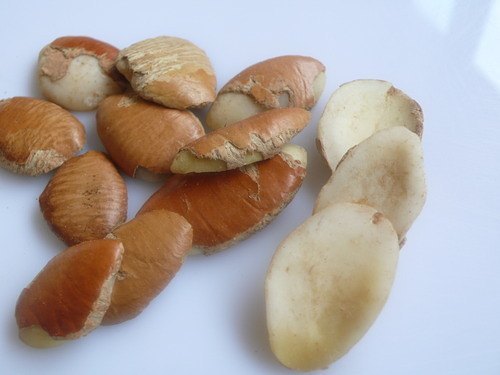
Ogbono seeds
When blended and not stored appropriately or stored for too long; Ogbono will taste and smell like soap when cooked.
- Store ogbono seeds away from water and moisture.
- Put freshly blended ogbono seeds into an airtight container and store in the fridge or freezer (it lasts longer in the freezer).
- You can store freshly blended ogbono seeds in ziploc/ freezer bags (be sure to push out air from the bag before sealing) in the fridge.
HOW TO STORE EGUSI
Unblended melon seeds can be preserved for longer than the already blended seeds.
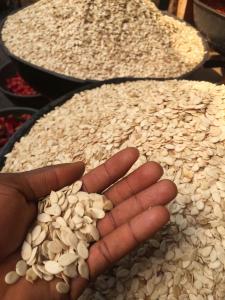
unblended egusi seeds
- Put freshly blended egusi seeds into an air tight container and store in the fridge or freezer ( it lasts longer in the freezer).
- You can store freshly blended egusi seeds in ziploc/ freezer bags (be sure to push out air from the bag before sealing) in the fridge.
HOW TO STORE SMOKED FISH (like smoked catfish, smoked eja Osan, smoked abo , mangala fish….)
* Make sure the fish has been well dried
* Shake the smoked fish to double check that there are no insects in it, you can break the fish open before storage.
* Wrap up the fish in 3-5 layers of old newspapers or brown paper, tie in nylon bags and put in the freezer till you are ready to use.
This method is only effective where there is a constant electricity supply.
In areas where you experience not so steady power supply; you can sun dry or oven dry the fish twice a week to keep it dry.
HOW TO STORE RICE
Before storing, make sure grains purchased do not contain weevils.

Long grain rice
- If you enjoy constant electricity where you live and have enough space in your freezer, you can keep the grains in the freezer for atleast one week (or permanently) before storing them in plastic containers. This is to prevent any form of infestation in the future; To avoid getting these grains wet in the freezer, you can put them in airtight (moisture free) containers before transferring them to the freezer. This is a very good way to store beans.
- It is best to store rice in tightly covered plastic containers rather than in bags. The lid of the container should prevent inflow of external bodies. The container would reduce air and make it easy to keep rice for longer.
- Put bay leaves in containers/bags where rice is stored.
- You can drop cloves in kitchen shelves, cupboards and pantry area to ward off weevils. You can also place bags of black pepper in kitchen cupboards, shelves and pantry.
- Put garlic / ginger / whole turmeric in plastic containers containing rice to keep bugs away.
In a case of infestation, you can expose grains to sunlight for atleast a day to get rid of the weevils.
HOW TO STORE PLANTAIN
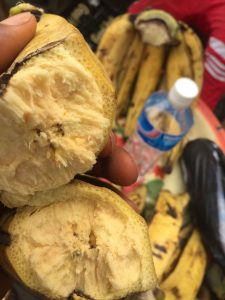
Benin plantain
If you buy green plantain and want to ripen it at home, put the plantain in a sack, wrap it up in a nylon. Preferably place the sack in the kitchen so the heat that comes from cooking can hasten ripening. This could be done in batches if you don’t want the whole bunch to ripen at once.
To preserve already ripe plantain for longer wrap them up in layers of newspaper and store in a fridge.
HOW TO STORE FRESH VEGETABLES AT HOME (Ugwu, green, water leaves, Afang, Ewedu)
The shelf life varies from vegetable to vegetable.
Fresh Ugwu and afang leaves have longer shelf life than most Nigerian vegetables.
Vegetables are highly perishable, however, If you intend to save them at home a while longer than usual, here’s how you can
- Before buying any of these vegetables, check to see that they have not been dipped in water. Vegetables are usually dipped in water to make their leaves look plum and fresh, however this also means that the leaves will wither really quickly; so except you intend to cook the vegetables immediately, its best to go for fresh vegetables that are yet to be dipped into water.
- Keep the leaves away from heat, put them in an airy place
- The best way to store the “green” / tete (market name) vegetable is by blanching and storing in the freezer.
- Preserve ugwu leaves (dry, unchopped / chopped) for longer by wrapping them up in layers of newspaper/ brown paper and storing in a fridge.
- Fresh afang leaves (chopped) can be preserved by spreading on a tray to dry a bit then wrapping up in layers of paper, tying up in a polythene bag and saving in the fridge.
- To save ewedu leaves for a couple more days, after plucking leaves off the stalk, wrap it up in layers of paper, tie in a polythene bag or in a freezer bag and keep in the fridge.
- It can be really difficult to save waterleaves for more than a day; however, you can extend its shelf life for a day or 2 by wrapping it up in layers of paper, tying it in a polythene bag and saving it in a fridge.
HOW TO STORE FLOUR
- Before you store, check to make sure the flour purchased does not contain weevils or worms.
- If there’s constant electricity where you live, you can keep the grains or flour in the freezer for at least one week (or permanently) before storing them in plastic containers. This is to prevent any form of infestation in the future. To avoid getting the flours wet in the freezer, you can put them in containers before transferring them to the freezer.
- It is best to store flours in tightly covered plastic containers rather than in bags.
- Put bay leaves in containers/bags where flours are stored.
- You can drop cloves in kitchen shelves, cupboards and pantry area to ward off weevils. You can also place bags of black pepper in kitchen cupboards, shelves and pantry.
HOW TO STORE ELUBO (YAM FLOUR) / PLANTAIN FLOUR

elubo (yam flour)
- Pour elubo in air tight plastic container, make sure the lid of the container is tightly fitted such that no insect or pest can find its way in. This also helps retain freshness.
- Store elubo/ plantain flour far away from salt as the salt can affect the texture of the elubo / plantain flour.
- Store away from sunlight.
- Always make sure you use up what’s left in the container with the elubo/ plantain flour before pouring in new stock.
- If you are storing in large quantity, it’s best to leave the dry yam/ plantain unblended and mill as you need. You can blend enough to take you through 3 months.
HOW TO STORE GARRI
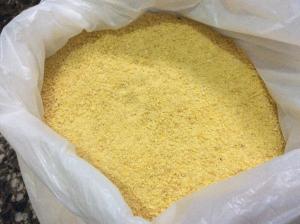
Before buying any type of garri, Scoop some of it in your hand, rub the grains through your fingers, if it feels dry and crispy, that is a good sign. It simply means the garri was properly dried during processing and this means a longer shelf life.
- Store garri in an air tight, properly closed container. Make sure the container is properly closed so as to prevent external factors such as insects, air and water from being in direct contact with the garri.
- In cases, where garri is purchased in large quantities and stored in sacks; do not store the sacks directly on the bare ground or too close to the wall. Instead, layer the inside of the sack with a nylon before pouring in the garri (to retain dryness and freshness), place the sack on a wooden slab and position it not too close to the wall.
This is particularly important with Ijebu garri as it loses its desired crunchiness and sour taste if not properly stored.
HOW TO STORE CRAYFISH
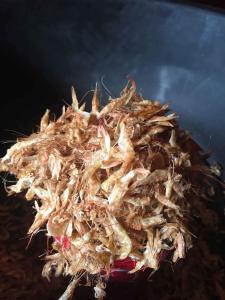
Crayfish
- If you buy whole (unblended ) crayfish ;Sun dry or oven dry it till it becomes so dry it breaks easily on touch, blend and transfer into an air tight container then store in a refrigerator (where you have constant electricity); if not you can put the container in a cool, dry , well ventilated space away from heat.
- When storing large quantity of crayfish in a bag; simply place the bag on a wooden slab, be sure to keep it in a cool place.
HOW TO STORE FRESH MEAT

Fresh meat
The first thing to do is avoid buying meat that has been exposed to the sun for hours,
- You can save fresh meat by simply sieving out the excess fluid in it, transferring it into a clean bag then freezing. This way if the meat is not for immediate consumption, it retains flavor and freshness for long.
- In a case where the meat has been in transit for more than 3 hours, you can rinse first before freezing, just make sure you marinade before freezing (even if it is just with salt). This helps lock in the flavor of meat for long.
How to preserve meat during transit
- Store beef in a cool place away from heat, if possible place ice over the beef till you get home.
- You can chop onions and pour over the beef (keeps it smelling fresh).
- You can also pour salt and massage into beef, usually the beef absorbs the salt so make sure you rinse off salt thoroughly once you get home (before cooking) to prevent from being salty when cooked.
How to store meat in the fridge / freezer.
- Keep raw meat and poultry sealed in clean containers in the bottom section of the fridge, to avoid it touching or dripping on to other foods (this is to avoid cross contamination).
- When meat is cooked, transfer into the fridge / freezer once it cools.
- Store Raw meat and cooked meat apart.
HOW TO STORE BABY FOOD
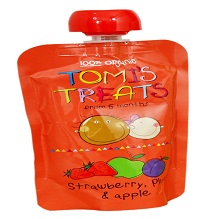
Tomi’s treat (baby food)
- With constant electricity, ready to eat packs of commercial baby food containing meat and fish should not be stored in the refrigerator for more than 24 hours, the one with veggies can be stored in the refrigerator for not more than 3 days.
- When storing in the freezer, be sure to use clean containers, freezing usually changes the texture and consistency of baby food, however, its best to save baby food in the freezer for not more than a month.
- You should not refrigerate baby food once you have dipped your baby’s spoon into it during feeding; Instead, serve in little quantities per time from the jar or pouch into bowl to feed your baby, if you then need more, you can take out more using a clean spoon to avoid contamination of the food. Any food left after feeding should be disposed. You can then tightly cover and transfer whatever is left in the jar or pouch into the fridge. Be sure to do this not more than 2 hours after the baby food is opened.
- You should only reheat baby food in microwave safe containers or using water baths.
- Store unopened jars/ pouches of ready to eat commercial baby food in cool, dry locations (away from heat to prevent contamination which is highly dangerous for babies.
- If you buy baby food in bulk, be sure to arrange them in the shelves such that the ones with the earliest expiration dates are placed in front of the others and used up before them.
HOW TO STORE ONIONS
Here is how you can store onions at home for months.
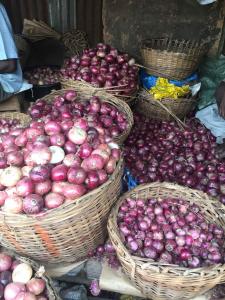
Sorting (purple) onions
- Pick out the onions already rotting
- Spread out the good onions on the floor (or on a mat or old sacks if you have) in a dark,dry and cool (well ventilated) room. Keep the onions away from sunlight/cold and water as this can lead to sprouting, rotting and change in flavor and taste of the onions.
- Once the outer layer of the onions is dry, you can transfer into a basket and leave in the same space.
- From time to time, check for ones that might be rotting and take them out. You can also air them every now other week to keep for longer.
HOW TO STORE NIGERIAN SNACKS
Chin Chin
Here’s how to keep chin chin fresh and crunchy for up to 4-6 weeks, where you have constant electricity, store in an air tight container and keep in the fridge , otherwise , place container in a cool, dry place (the fridge keeps it fresh and crunchy for longer though).
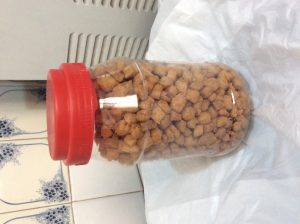
chin chin
Kuli kuli
When kuli kuli turns soft, you can put in a pre-heated oven for a few minutes to dry and harden it back. However, to keep it dry, tie it in a polythene bag, put it in an air tight container and store in the fridge.
HOW TO STORE GINGER
The first step is making sure the ginger you buy is fresh; always go for ginger that looks firm,plump and dry, avoid ginger that’s bruised ,wet or wrinkled (in cases where you have a few of such ginger roots, separate from the bunch and use them first).

www.thinkeathealthy.com
Put the ginger roots in a Ziploc bag , squeeze out all the air , seal the bag and place in the moist free compartment of your fridge ; With regular power supply, the ginger should keep for between 6-8 weeks.
HOW TO STORE GARLIC
If you plan to store for long, its best to buy fresh garlic bulbs instead of garlic cloves.
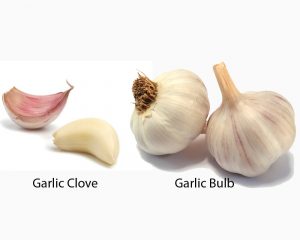
www.thosefoods.com
- Store garlic out of the fridge, this usually makes the garlic dry out and unusable.
- Store in a dark, dry and well ventilated area away from moisture and light.
HOW TO STORE FRESH PEPPERS – TOMATOES, TATASHE (BELL PEPPER) AND RODO (SCOTCH BONNET)
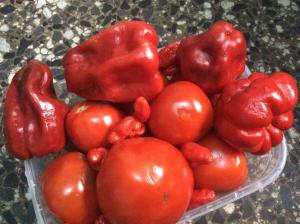
Peppers are usually in season sometime between October and April, at this time, the prices is quite cheap. So if you live in an area with constant power supply, you can buy in bulk (enough to take you through the months of scarcity) and save them in the freezer.
There are different methods of storing tomatoes but here is a method of storage that works well such that the pepper stays fresh throughout the months of storage.
- Sort the peppers out first; separate the firm ones from the not so firm ones.
- Wash and portion pepper (tomatoes,tatashe, rodo) into smaller quantities (enough to cook a pot of stew per time).
- Pack the not so firm peppers together and make sure you use them before the others.
- Store packs of pepper in the freezer and when you are ready to cook with it, just take out a pack and blend for cooking…

